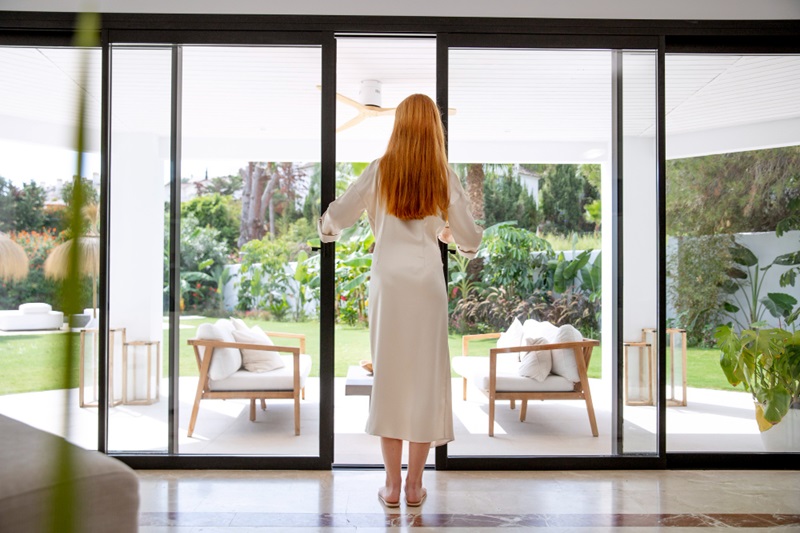In the pursuit of sustainability and energy efficiency, advancements in construction and design play a crucial role. Among the various components of a building, doors are often overlooked despite their significant impact on energy conservation. Traditional doors, especially in older buildings, are notorious for energy loss due to poor insulation. However, modern solutions like double glazed doors have emerged as a promising remedy to this problem. In this article, we delve into the concept of double glazed doors, exploring their benefits, installation process, and environmental implications.
Understanding Double Glazed Doors
Double glazed doors, also known as insulated glass units (IGUs), are constructed using two panes of glass separated by a layer of air or gas, typically argon or krypton. This design enhances insulation properties by creating a barrier that reduces heat transfer between the interior and exterior of a building. The space between the glass panes acts as an additional thermal barrier, minimizing heat loss during colder months and heat gain during warmer periods.
Benefits of Double Glazed Doors
- Improved Energy Efficiency: The primary benefit of double glazed doors is their ability to significantly reduce energy consumption for heating and cooling. By minimizing heat transfer, these doors help maintain a comfortable indoor temperature, thereby reducing reliance on heating and air conditioning systems.
- Enhanced Insulation: Compared to single glazed doors, double glazed doors offer superior insulation, preventing drafts and cold spots commonly associated with traditional doors. This leads to a more consistent and comfortable indoor environment throughout the year.
- Noise Reduction: In addition to thermal insulation, double glazed doors also provide soundproofing benefits. The combination of multiple glass panes and the air or gas layer effectively dampens external noise, creating a quieter indoor environment.
- Increased Security: Double glazed doors are typically more robust than their single glazed counterparts, offering enhanced security features such as reinforced frames and multi-point locking systems. This not only improves security but also provides peace of mind to occupants.
- UV Protection: The use of specialized coatings on double glazed doors can help filter harmful ultraviolet (UV) rays, protecting interior furnishings and artwork from fading or damage caused by prolonged sun exposure.
Installation Process
Installing double glazed doors involves several steps to ensure proper fitment and maximum energy efficiency:
- Measurement and Assessment: Prior to installation, accurate measurements of the door frame are taken to custom-order the double glazed unit. Additionally, an assessment of the existing structure is conducted to identify any necessary modifications or reinforcements.
- Removal of Old Door: The existing door is carefully removed, taking care to preserve surrounding structures and finishes.
- Preparation of Door Frame: The door frame is inspected and prepared to accommodate the new double glazed unit. This may involve adjusting the frame size, reinforcing structural elements, and applying sealants to prevent air leakage.
- Installation of Double Glazed Unit: The double glazed door unit is carefully placed and secured within the prepared frame. Proper alignment and sealing are crucial to ensure optimal performance.
- Testing and Adjustment: Once installed, the door is tested to verify functionality and inspect for any signs of air leakage or misalignment. Adjustments are made as necessary to achieve a proper fit.
- Finishing Touches: Finally, any remaining gaps or exposed surfaces are sealed, and finishing touches such as trim and hardware are installed to complete the installation.
Environmental Implications
The widespread adoption of double glazed doors offers significant environmental benefits:
- Reduced Carbon Footprint: By minimizing energy consumption for heating and cooling, double glazed doors help reduce greenhouse gas emissions associated with fossil fuel-based energy production.
- Resource Conservation: The improved insulation provided by double glazed doors reduces the need for excessive heating and cooling, thereby conserving natural resources such as coal, oil, and natural gas.
- Promotion of Sustainable Practices: Incorporating energy-efficient building components like double glazed doors aligns with broader sustainability initiatives aimed at mitigating climate change and preserving the environment for future generations.
Conclusion
Double glazed doors represent a practical and effective solution for reducing energy loss in buildings. With their ability to improve energy efficiency, enhance insulation, and provide additional benefits such as noise reduction and UV protection, these doors offer both environmental and economic advantages. By understanding the benefits, installation process, and environmental implications of double glazed doors, building owners and occupants can make informed decisions to promote sustainability and create more comfortable living and working spaces.



